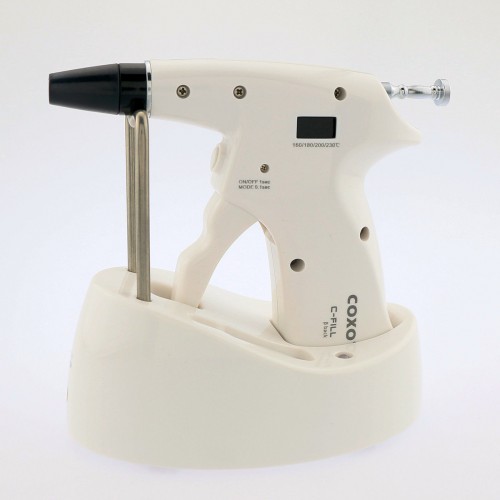Currently, there are several rotary endodontic obturation systems in the dental market and all designed with one specific goal in mind – to clean and shape the canal(s). However, several research studies have illustrated that regardless of the type of file used to shape the canal, none are able to contact all the canal walls or surfaces.

YUSENDENT COXO Dental Endo Gutta Percha Obturation Endodontic C Fill Gun CE
Files are generally categorized as:
Radial-ended files
Enable cleaning and shaping but the procedure is slower and safer
Examples include: Profile & K3
Non-radial-ended files
Cut more effectively but can also lead to errors if not properly managed
Examples include: ProTaper, Twisted Files, Endosequence
The most important factor when choosing and utilizing a particular file system is to follow the appropriate technique outlined by the manufacturer and dictated by the design of the file to remove vital or necrotic tissues from the canal spaces. This will optimize the files’ efficiency and minimize damage to the canal and tooth.
Each file system has advantages and disadvantages; the best system is the one you are proficient with and used to handling.
Additionally, clinicians must adhere to the principles of endodontic treatment:
Completely remove infected material from the canal space
Ensure there is a glide-path before using rotary files
Preserve tooth structure while reducing the risk of vertical root fracture in the future
Manage the apical preparation of the canal to avoid transportation or unnecessary enlargement
Carefully clean and shape the canals in furcation areas to decrease furcation involvement
With respect to obturation, there are 3 techniques that are employed.
- Warm Vertical Condensation
This is the most commonly used technique in North America. Nowadays, there are several techniques which originated from the classic Schilder’s technique. (3) This technique requires clinicians to use a heat carrier (e.g. Touch n’ heat; Calamus Duo; Elements, Super Endo α2) as well as injectable gutta-percha (e.g. Obtura II, Calamus, Super Endo β) - Carrier-based techniques
This is a popular option used to fill canal spaces. Different carrier-based systems use different core materials to deliver gutta-percha to the canals. Currently, carriers made of cross-linked gutta-percha such as Gutta-Core (Tulsa/Dentsply) are available which may be easier to remove from the canal in situations where retreatment is necessary. - Lateral condensation
In this technique, gutta-percha cones are placed within the canal and finger spreaders are used to place filling material and pack the canal space. There is an increased possibility of vertical root fracture using this procedure if excessive pressure is applied against the canal walls.
At this time, there is no scientific evidence to suggest whether one system is more advantageous over another.
See more:https://www.dentalsalemall.com/category-80-b0-Endo-Equipment.html
How to choose a dental autoclave sterilizer for your dental practice
How to clean dental autoclave in a short time